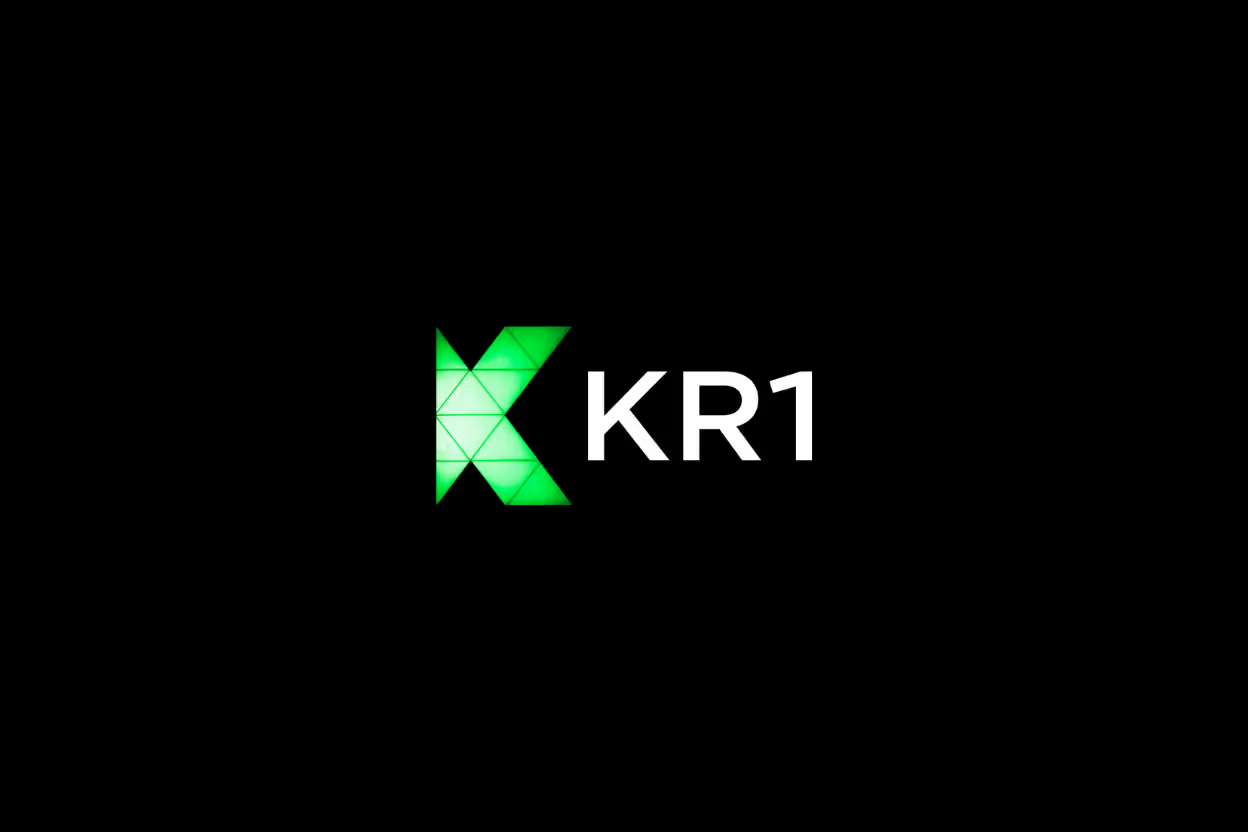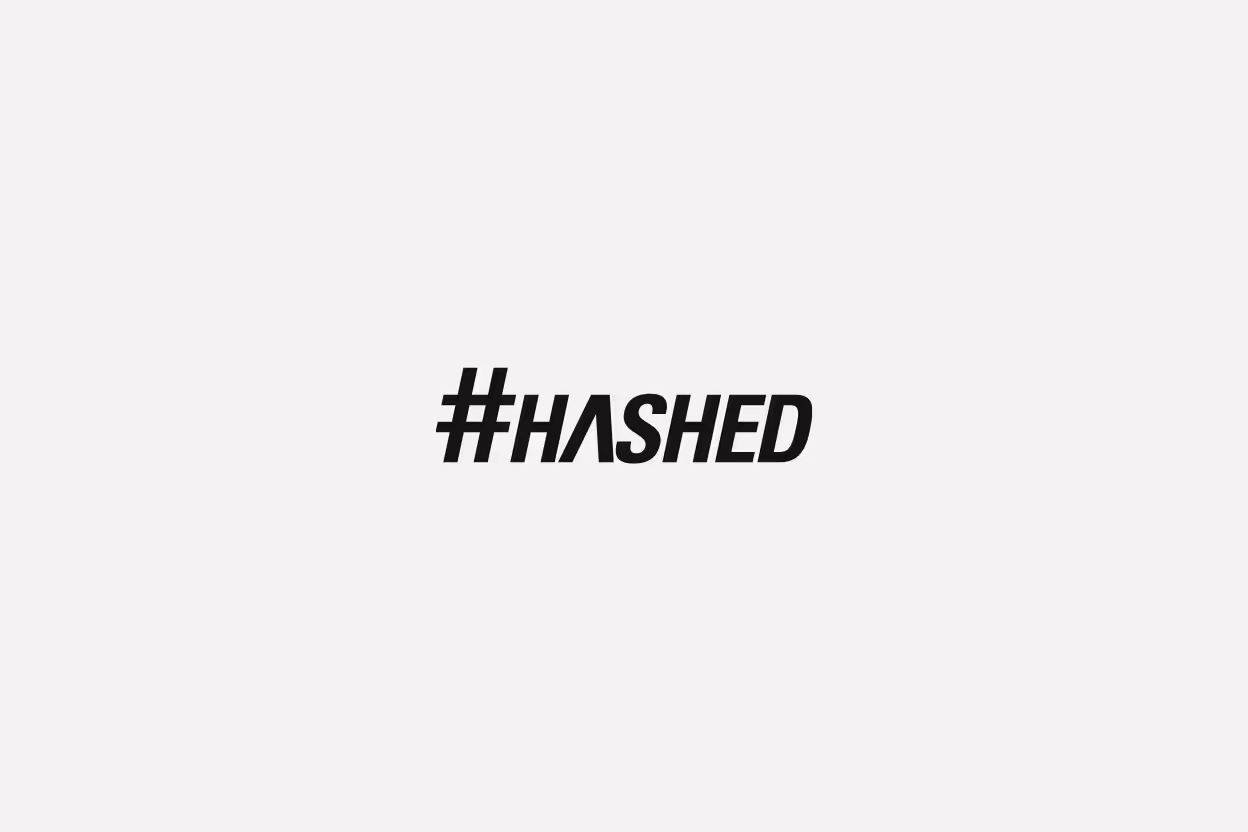KR1 is a leading investment firm specializing in early-stage blockchain ventures, with a focus on digital assets and proof-of-stake networks. Understanding trends in KR1’s portfolio offers valuable insights for crypto founders, web3 builders, and venture capitalists looking to identify where innovation and capital are flowing in 2025.
KR1’s holdings emphasize high-liquidity tokens tied to decentralized finance, staking, and interoperability platforms. The firm’s strategic choices reveal growing institutional interest in proof-of-stake projects and highlight key sectors poised for expansion. This post outlines KR1’s portfolio composition, performance metrics, sector focus, and what this means for investors and builders in the web3 space.
KR1’s Investment Philosophy and Portfolio Composition
To understand KR1’s approach to blockchain investing, it helps to look at where they deploy capital and why. The company targets a blend of sectors that form the backbone of next-generation blockchain networks. Their portfolio reflects a strong focus on foundational layers that enable scaling, cross-chain interaction, and decentralized finance. This approach balances the upside potential of early-stage assets with steady income streams generated through staking and governance participation.
Targeted Themes: Interoperability, DeFi, and Infrastructure
KR1 concentrates investments on projects centered around three core themes: interoperability, decentralized finance (DeFi), and infrastructure. These themes aren’t just buzzwords—they represent essential components for blockchain’s maturation and real-world usability.
- Interoperability: KR1 has notable stakes in ecosystems like Cosmos and Polkadot. Both platforms tackle a persistent problem in blockchain: how to enable different blockchains to communicate and share data. Interoperability is key for building a cohesive web3 environment where users can move assets and data freely across chains. By backing projects that facilitate this, KR1 positions itself at the forefront of blockchain scalability and connectivity.
- DeFi: Ethereum-based DeFi protocols figure prominently in KR1’s portfolio. These projects are expanding access to financial services without traditional intermediaries. DeFi platforms provide liquidity, credit, and yield opportunities, embedding financial primitives into blockchain networks. This aligns with KR1’s vision of supporting ecosystems that expand decentralized economic activity.
- Infrastructure: Beyond user-facing apps, KR1 invests in fundamental blockchain infrastructure—smart contract platforms, oracle networks, layer-2 scaling solutions, and validator nodes. Without robust infrastructure, blockchains can’t scale or maintain security. Infrastructure projects ensure networks can handle growing demand, keep transaction costs manageable, and stay resilient against attacks.
Why are these themes critical? They set the stage for mass adoption. Without interoperability, blockchain networks risk fragmentation and user lock-in. DeFi’s growth depends on reliable infrastructure and accessible cross-chain tools. KR1’s thematic focus therefore signals a forward-looking view on how blockchain tech develops from isolated chains to interconnected, functional ecosystems.
Staking Activities and Revenue Generation
KR1 does more than just hold tokens—staking is a fundamental part of how the firm extracts value from its portfolio. By participating directly in proof-of-stake (PoS) networks like Ethereum 2.0, Polkadot, and Cosmos, KR1 generates steady income while supporting network security.
Staking involves locking up tokens to validate transactions and secure the network. In return, stakers earn rewards proportional to their contribution. For KR1, this means:
- Recurring revenue with minimal operational burden: Once staked, tokens generate rewards passively. KR1’s early move into staking since 2019 has allowed it to build reliable revenue streams independent of market fluctuations.
- Alignment with network health: Staking aligns KR1’s interests with those of the network. Active participation in governance and staking ensures KR1 isn’t merely a passive investor but a stakeholder invested in ecosystem success.
- Portfolio value enhancement: Staking rewards increase the firm’s token holdings over time, compounding growth without selling assets. This creates a buffer during crypto market downturns and an additional layer of returns during bull markets.
Staking also reflects KR1’s preference for projects with strong community engagement and decentralized security models. It’s a way to stay close to the technology and governance while maintaining exposure to the price upside of key crypto assets.
By combining targeted investment themes with active staking, KR1 achieves a balanced portfolio strategy. The firm captures early-stage upside in interoperability, DeFi, and infrastructure while anchoring its income through low-cost staking rewards. This dual approach could offer useful insights to VCs and Web3 founders planning their own growth and revenue models in 2025 and beyond.
Recent Performance Trends and Market Impacts
KR1’s portfolio performance reflects the broader shifts and challenges hitting the crypto market in 2025. Understanding these trends provides crucial context for venture capitalists and web3 builders who want to grasp the risks and opportunities shaping investment outcomes today. The past quarters have tested digital asset valuations across the board, but they also highlight pathways toward renewed growth and portfolio resilience.
Portfolio Valuation Dynamics and Market Correction
KR1’s net asset value (NAV) has been affected significantly by wider market movements, driven in part by major macro events. The recent Bitcoin halving has influenced market psychology and liquidity, contributing to temporary price pullbacks in Bitcoin and related digital assets that dominate KR1’s holdings. Halving events reduce Bitcoin’s supply issuance rate, which theoretically supports price appreciation, but the periods following often see volatility as markets adjust to new supply-and-demand realities.
Moreover, a price retreat across many crypto tokens has pressured valuations. This pullback is not isolated to a single asset but spans multiple sectors, including decentralized finance, staking tokens, and interoperability platforms—core areas of KR1’s portfolio. Investors may wonder how these macro events ripple through early-stage blockchain investments, especially those tied to network token economics and staking yields.
Here are key factors behind the current valuation trends:
- Market-wide rebalancing by institutional and retail holders as risk appetite shifts.
- Short-term profit-taking following earlier crypto rallies, reducing liquidity.
- Changing staking reward expectations, where lower token prices reduce staking APRs in fiat terms, impacting income streams.
- Regulatory progress and uncertainty still influencing investor behavior, particularly with regard to U.S. and European markets.
This dynamic market correction serves as a reality check but also cleanses speculative excesses, making space for higher-quality projects to stand out. For KR1, this translates into a temporary drop in portfolio NAV but also a clearer picture of intrinsic project value beyond hype.
Resilience and Opportunity in Consolidation Phases
Periods of consolidation often test the durability of portfolios and forge stronger investment foundations. KR1 views this current phase not just as a challenge but as an opening to fortify its holdings. Industry consolidation tends to weed out weaker projects, leaving behind those with solid technology, governance, and community support.
KR1’s outlook aligns with this perspective: market consolidations create opportunities to acquire stakes in undervalued projects or double down on promising ventures with improved long-term fundamentals.
This is why resilience matters now more than ever:
- Clearer market signals emerge during consolidation, helping distinguish sustainable initiatives from speculative bubbles.
- Portfolio rebalancing allows shifting focus toward projects with proven use cases and robust ecosystems.
- Staking and governance participation during consolidation phases can enhance value capture while supporting network security.
- Partnerships and protocol upgrades are often accelerated as projects compete for relevance.
For web3 builders and VCs, this phase encourages patience and selectivity. Instead of chasing short-term gains, the strategy shifts toward building for durability. Asking questions like “Which protocols offer genuine interoperability advantages?” or “Where is developer activity strongest?” becomes central to identifying sustainable winners.
In summary, KR1’s strategy expects the current market contraction to catalyze a healthier, more mature ecosystem. The fallout from recent market trends clears the way for innovation and growth in the next cycle, positioning their portfolio to benefit as confidence returns and valuations stabilize.
Strategic Outlook: Regulatory Challenges and Market Positioning
KR1’s journey through the evolving blockchain investment scene has always intersected with regulation and market access factors. As the crypto sector faces more defined rules, especially in regions like the UK, understanding how these developments influence KR1’s strategy is essential. At the same time, KR1’s plans to uplist on public markets highlight its focus on deepening liquidity and attracting institutional investors. This section explores how regulatory changes shape KR1’s portfolio growth and how market positioning moves, like uplisting, create new opportunities for value and scale.
UK Regulatory Environment and Its Impact on Portfolio Growth
The UK is rolling out new rules for cryptoassets that mark a big step toward clearer regulation and wider institutional acceptance. In April 2025, the government introduced draft legislation aimed at regulating crypto firms under the existing Financial Services and Markets Act framework. This move brings firms involved in crypto trading, custody, stablecoin issuance, and other key activities under the Financial Conduct Authority’s (FCA) supervision.
For KR1, this regulatory clarity comes with both constraints and opportunities:
- Increased compliance requirements: KR1’s portfolio companies, especially those operating in or targeting the UK market, must prepare for FCA authorizations, stricter transparency, and operational standards. This could raise costs but will also weed out riskier players.
- Enhanced investor confidence: Clearer rules tend to attract more institutional capital by reducing legal uncertainties. Investors will look favorably on projects and funds operating in a regulated environment that balances innovation with consumer protection.
- Focus on qualifying cryptoassets and stablecoins: The legislation distinguishes “qualifying” cryptoassets from tokenized securities or e-money. Projects in KR1’s portfolio that fit these categories may see smoother pathways to market expansion and regulatory recognition.
- Cross-border challenges: UK rules require foreign platforms targeting UK users to seek FCA approval, affecting how KR1’s investments handle international access and partnerships.
By shaping the market’s regulatory perimeter, UK policy reform pushes KR1 to carefully consider legal compliance when selecting or supporting projects. It also encourages the firm to back ventures with strong governance, operational resilience, and clear regulatory strategies. After all, market growth today depends heavily on trust and legitimacy.
Uplisting and Institutional Investment Opportunities
KR1 recently expressed intentions to uplist its shares on larger public exchanges such as the London Stock Exchange’s AIM or US OTC markets. This move is about taking the company’s market presence to the next level and unlocking several key advantages:
- Greater liquidity: Moving to AIM or US OTC would enable more frequent and larger-volume trading of KR1 shares, making it easier for current and new investors to buy and sell positions.
- Improved valuation multiples: Uplisting often leads to higher valuation multiples due to better visibility, access to institutional investors, and more rigorous reporting standards.
- Broader investor base: The US OTC market could give KR1 exposure to a wide pool of institutional and accredited investors less familiar with the UK AIM. This diversification can stabilize share prices and bring more long-term holders.
- Increased credibility: Listing on recognized platforms requires adherence to stricter governance and disclosure standards. This transparency can reassure both the market and potential partners about KR1’s professionalism and growth plans.
For crypto-focused investment firms, uplisting signals maturity and ambition. It bridges the gap between traditional finance and emerging crypto markets. KR1’s move is a strategic step towards becoming a more significant player in blockchain venture investing.
Investors and founders might ask: How will this uplisting affect KR1’s approach to its portfolio? Will it lead to a tighter focus on scalable, market-ready assets? And how can project teams benefit from the deeper capital availability this process may unlock?
In summary, KR1’s strategic positioning navigates regulatory headwinds while targeting uplisting benefits that enhance market dynamics. Together, these factors shape how the firm plans to grow, adapt, and provide value in the competitive web3 investment space.
What KR1’s Portfolio Trends Mean for VCs and Web3 Builders
KR1’s portfolio offers a clear window into where serious capital is flowing in web3 during 2025. Their investment choices reveal which sectors they believe hold promise, how they balance risks amid market shifts, and what lessons founders and VCs can draw from their approach. Understanding these trends helps both project builders and investors orient themselves in a strong but still evolving crypto market.
Identifying Early-Stage Opportunities Through KR1’s Lens
KR1’s focus reveals practical signals for spotting promising sectors and projects early on. They lean into areas shaping blockchain’s next phase, such as interoperability, staking, decentralized finance, and foundational infrastructure. Their bets on protocols like Polkadot, Celestia, and Lido emphasize networks that enable scalability and cross-chain communication while generating recurring income through staking.
By following KR1’s lead, investors and builders gain insight into:
- Where innovation meets real utility: KR1 favors projects solving technical bottlenecks or expanding DeFi’s reach rather than speculative tokens with weak fundamentals.
- The value of staking and governance integration: Projects that encourage active participation from investors, like staking, tend to offer steady returns and deeper network commitment.
- Ecosystem hubs over isolated dApps: KR1 invests in platforms that form comprehensive ecosystems, providing environments where multiple projects can thrive and interoperate.
This portfolio strategy guides VCs on which themes to prioritize and helps builders identify features investors value: security, usability, and composability. KR1’s activity signals that early-stage success increasingly depends on solving practical problems and offering sustainable economic models.
Risks and Rewards in the Current Market Environment
KR1’s portfolio performance mirrors the complex balance of risk and reward that defines blockchain investing in 2025. Volatility remains a defining factor with micro and macro trends influencing asset values. At the same time, the market is moving through maturation phases where fundamentals replace hype.
Here’s how KR1’s experience explains the current landscape:
- Volatility is to be expected: Even solid projects see price swings triggered by broad crypto liquidity cycles, regulatory news, and shifting investor sentiment.
- Income from staking cushions downturns: Unlike purely speculative holds, KR1’s staked tokens produce ongoing yields that soften losses during price dips and compound growth over time.
- Market corrections weed out weaker projects: Consolidation phases expose teams with poor execution or governance, while shining a spotlight on those with genuine product-market fit.
- Investor patience is crucial: KR1’s measured approach suggests that success in web3 investing demands a long-term horizon rather than quick flips.
This balanced view helps both VCs and builders understand that while the upside potential remains big, the path includes bumps and periods of market refinement. Knowing this helps set expectations around capital allocation, project milestones, and risk management.
Key Takeaways for Building and Investing in Web3
KR1’s portfolio offers several lessons for anyone building or investing in web3 projects. These practical insights can improve the chances of long-term success:
- Focus on foundational technology: Projects delivering essential infrastructure or enabling broad interoperability tend to create lasting value.
- Prioritize network effects: Platforms that encourage developer activity, user adoption, and protocol collaboration form sustainable ecosystems.
- Incorporate staking and governance: Aligning economic incentives with network participation strengthens security and community commitment.
- Prepare for market cycles: Build with resilience, expecting phases of volatility and consolidation. This means managing burn rates, scaling cautiously, and emphasizing product quality.
- Understand regulatory trends: Regulatory clarity can boost institutional interest but requires compliance readiness, especially in mature markets like the UK.
- Balance innovation with pragmatism: While new ideas matter, KR1’s portfolio confirms the importance of projects that address real-world needs and demonstrate tangible progress.
These takeaways serve as a guide to approach web3 ventures with discipline and confidence. Investors can spot projects likely to survive and scale, while founders can design products that attract capital and community support within evolving market realities. KR1’s portfolio is not just a list of assets — it’s a roadmap for building and investing thoughtfully in web3 today.
Conclusion
KR1’s portfolio highlights key trends shaping blockchain investment in 2025: strategic diversity across interoperability, DeFi, and infrastructure; consistent income through staking; and a focus on projects with strong governance and scalability. These signal that successful ventures will need to balance innovation with sustainability, while navigating evolving regulatory frameworks that demand transparency and compliance.
For VCs and builders, KR1’s approach underlines the value of supporting foundational technologies and ecosystems that enable cross-chain communication and secure network participation. The increasing emphasis on proof-of-stake networks and staking rewards also points to income models that go beyond speculative gains, promoting longer-term engagement.
As blockchain projects continue to mature, KR1’s portfolio suggests that careful selection, regulatory readiness, and ongoing ecosystem innovation will determine who leads the next wave of growth. How will your project or investment strategy adapt to these shifting priorities? Staying informed and agile remains essential for thriving in the web3 space.









